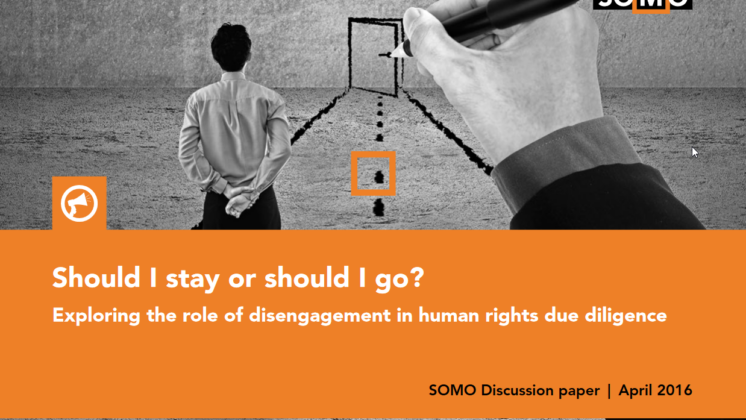When challenging a corporate narrative, civil society actors can help their case by showing that the way the company presents the issue is itself the problem and forcing the company into a defensive position. This involves highlighting what is problematic about company denials or claims of ignorance and drawing attention to what the company should have known or done.

While it can be effective to reframe the issue in a specific case, it may also be useful to examine the company’s track record more widely. Showing a pattern of company behaviour, or repeated action or inaction on a particular issue, can shift the perception of customers, shareholders and investors, and regulators of the company. For example, you could take this approach when companies use distractions and obfuscations, hide behind complex supply chains, outsource high-risk activities, or outsource recruitment and employment.
This counter-strategy requires civil society actors first to identify the harmful corporate narrative and then to redefine this narrative as the problem. For example, if a mining company claims it has no knowledge of violence committed by local police against community members near its mine site, challenge the company about the nature of its discussions with police about security at the mine. If there were no discussions, why not? If there were discussions, what was the substance of the discussions? You can then redefine the company’s failure to ensure the safety of local community members, and its failure to prevent or otherwise adequately respond to the violence, or its refusal to disclose information about its security at the mine or its discussions with police, as the problem.
RESOURCE: SOMO briefing on the role of disengagement in human rights due diligence
When companies deny their responsibility or accountability for human rights abuses or environmental harms, you can use legal concepts such as 'Duty of care'
‘Duty of care’ refers to the legal obligation to exercise a reasonable standard of care to not harm others. as well as emerging standards of corporate human rights due diligence
‘Human rights due diligence’ (often abbreviated to ‘HRDD’) is “a way for enterprises to proactively manage potential and actual adverse human rights impacts with which they are involved.” The United Nations Guiding Principles on Business and Human Rights (UNGPs) clarify that all businesses have a responsibility to respect human rights and to do this they can conduct HRDD.
The UNGPs outline four steps of HRDD:
1. “Identifying and assessing actual or potential adverse human rights impacts that the enterprise may cause or contribute to through its own activities, or which may be directly linked to its operations, products or services by its business relationships;
2. Integrating findings from impact assessments across relevant company processes and taking appropriate action according to its involvement in the impact;
3. Tracking the effectiveness of measures and processes to address adverse human rights impacts in order to know if they are working; and
4.Communicating on how impacts are being addressed and showing stakeholders – in particular affected stakeholders – that there are adequate policies and processes in place.
HRDD is also considered in the counter-strategy on making soft law into hard law to help reframe the actions, omissions, and failures of the company as the problem and call into question company protestations of non-responsibility. These legal concepts directly challenge common corporate denials of knowledge or responsibility for harms, and civil society actors often use them in legal claims against companies. In some cases, redefining corporate claims as the problem can be the first step to legislative reforms (see the counter-strategy on advancing corporate accountability norms).
Reframing the issue can also be useful when a company associated with human rights or environmental harms has irresponsibly disengaged from its operations or business relationships. Companies often claim they have fixed a problem by distancing themselves from abuses. However, these claims can be reframed by highlighting the new harms arising out of the company’s decision to disengage.


